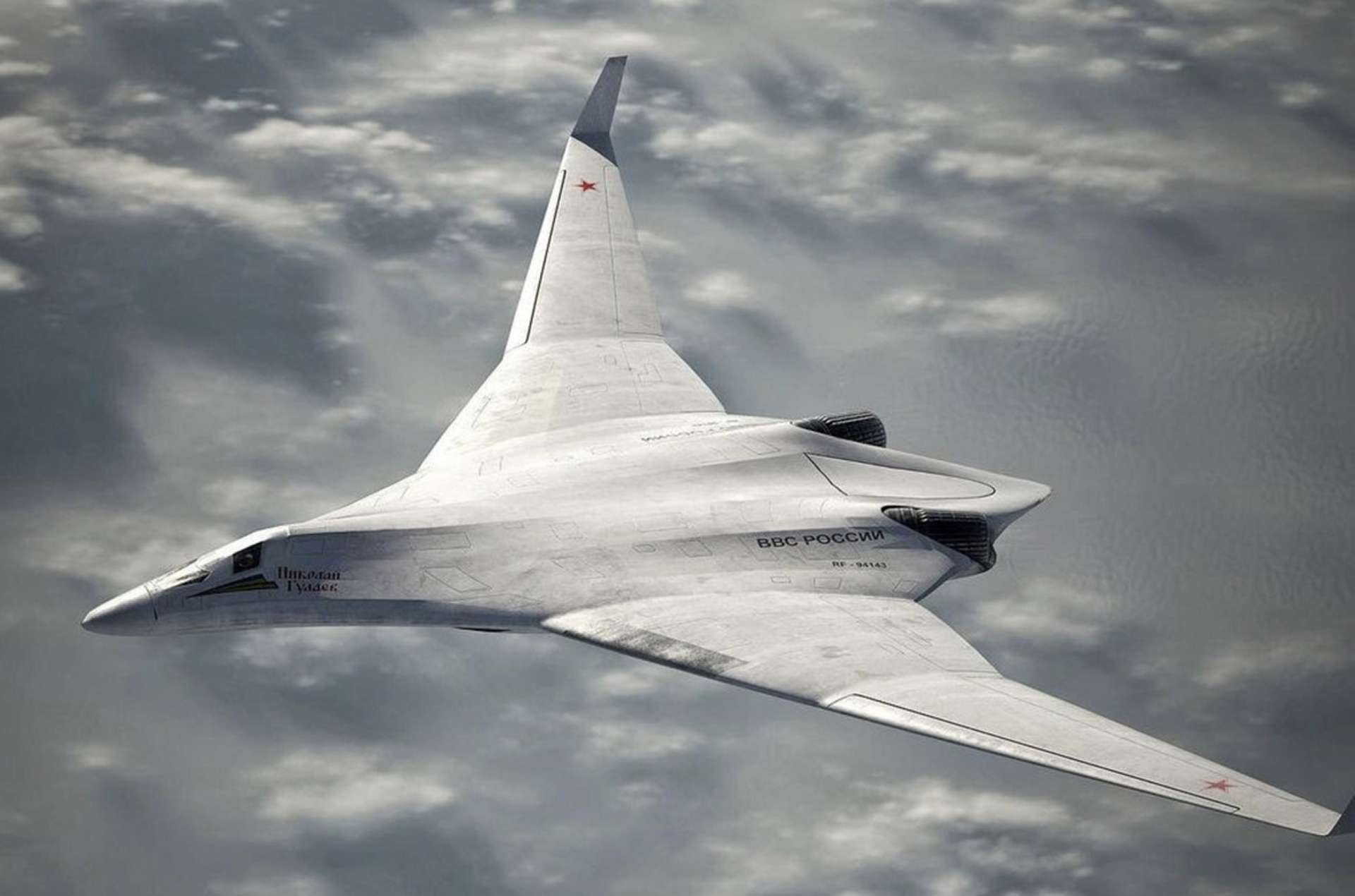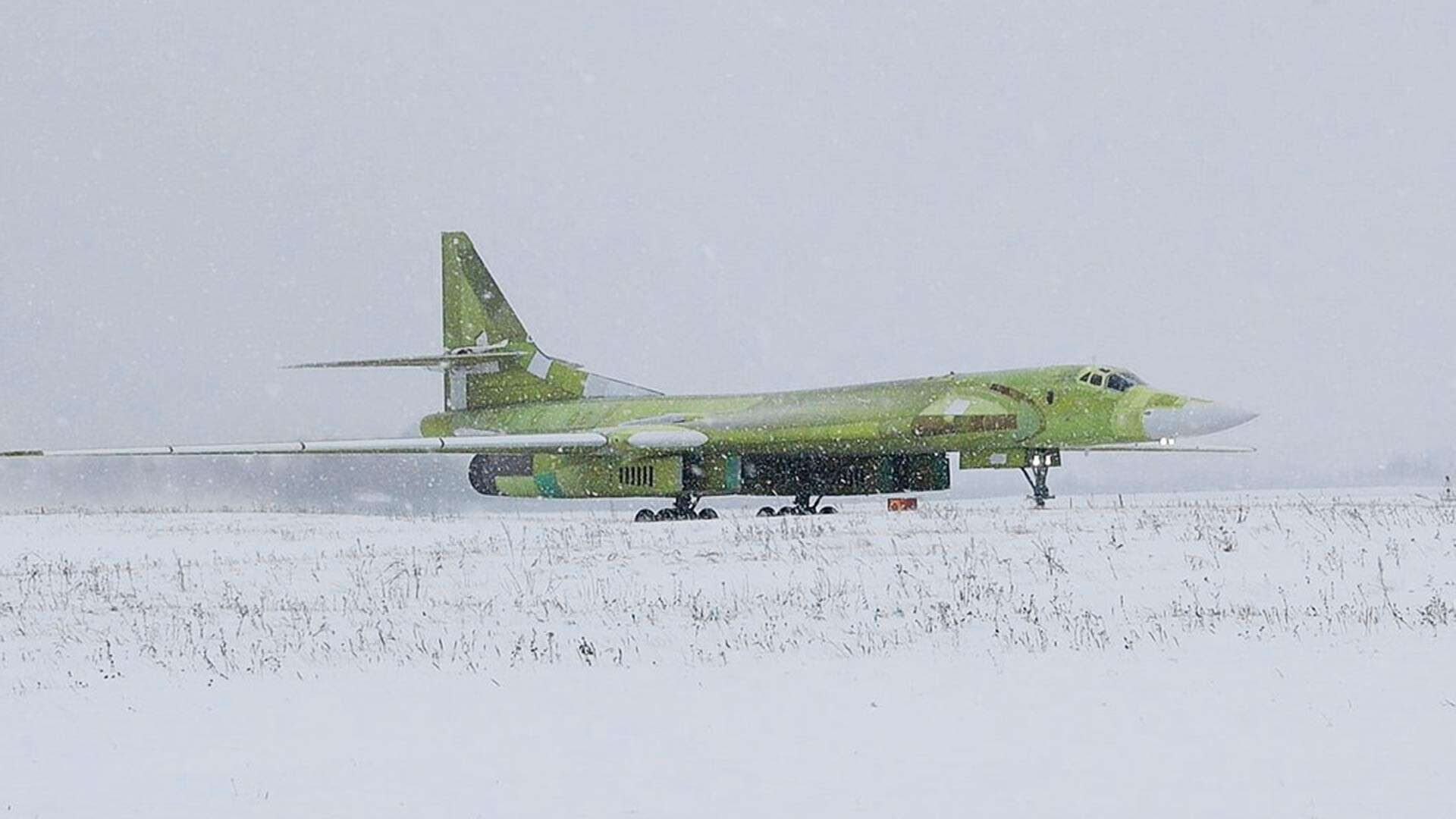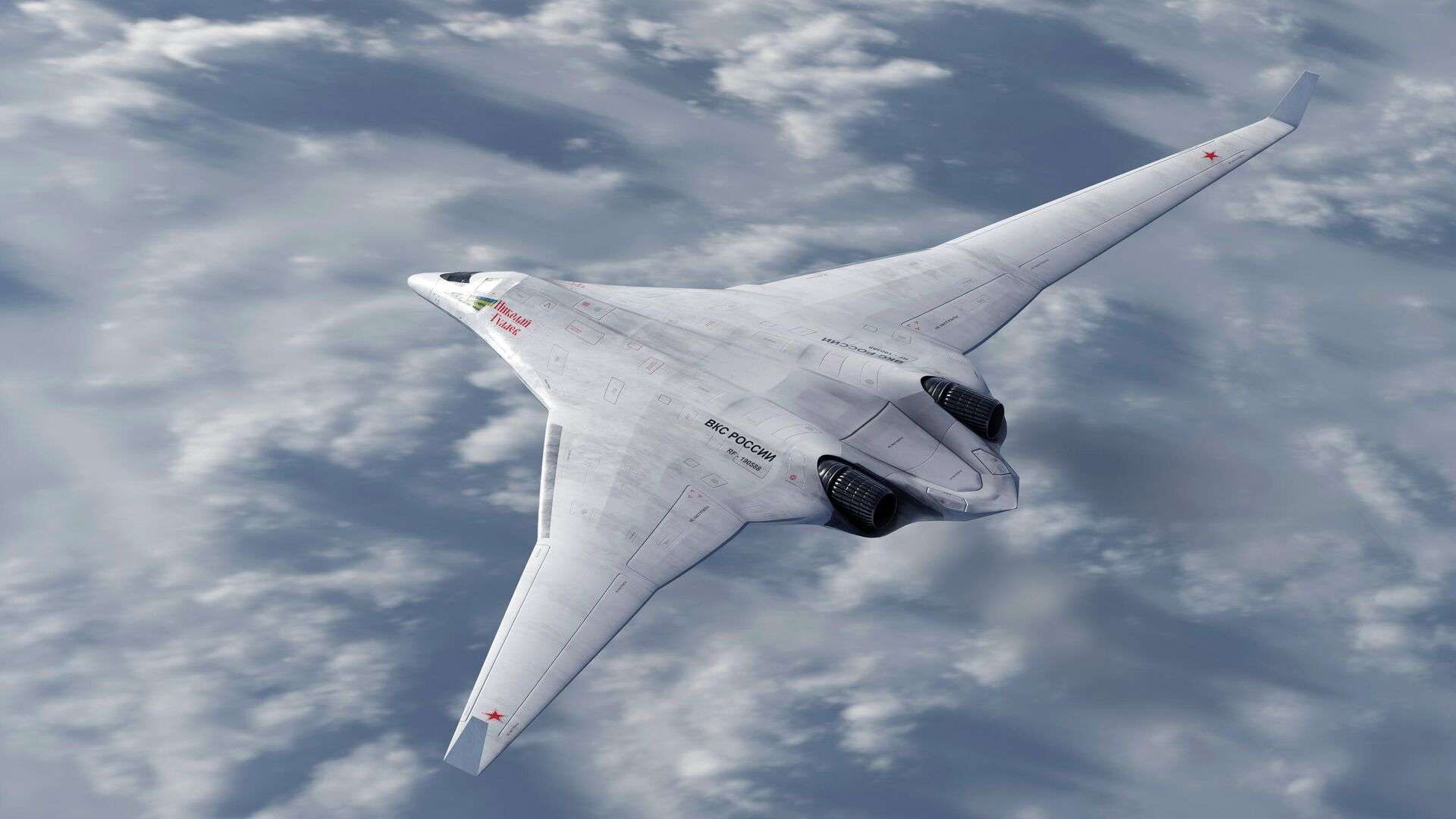Breaking News
Russia's future PAK DA Poslannik stealth bomber to carry 30 tons of nuclear and hypersonic missiles.
On July 31, 2024, detailed information surfaced on Russian social media about the PAK DA "Poslannik," Russia's newest strategic bomber. This aircraft, part of a new generation of military aviation, has encountered various challenges and skepticism during its development. However, recent updates offer a more detailed picture of its technology and strategic capabilities.
Follow Army Recognition on Google News at this link

The PAK DA Poslannik is designed as a long-range, stealth strategic bomber with a projected range of 12,000 kilometers (7,500 miles) and a payload capacity of 30 tons, or even 35 tons according to some sources, including both conventional and nuclear weapons, as well as hypersonic missiles. (Picture source: Russian social media)
During a meeting with students at KNITU-KAI named after A.N. Tupolev on June 20, 2024, Konstantin Timofeev, the Managing Director of JSC Tupolev, confirmed the ongoing progress of the PAK DA, though at a slow pace. By late 2023, the PAK DA was ready for ground strength tests, with the first flight initially projected for 2024 now likely postponed to 2025. Serial production is anticipated to begin in 2027.
The PAK DA, an abbreviation for "Promising Aviation Complex for Long-Range Aviation" (Russian: Perspektivnyi aviatsionnyi kompleks dal'ney aviatsii), is described in Russia as a sixth-generation bomber, incorporating technologies such as stealth, internal weapon bays, and supersonic flight capabilities without afterburners. Sixth-generation aircraft are expected to feature laser weapons, network-centric warfare capabilities, and unmanned flight modes. While laser weapons suitable for air combat remain undeveloped, network-centric capabilities are already being utilized in current-generation aircraft. The potential for unmanned operations is also within reach, given advancements in automation and control systems.
Developed by Tupolev for the Long-Range Aviation branch of the Russian Aerospace Forces, the aircraft's development involves several manufacturers, including the Kazan Aircraft Production Association, Novosibirsk Aircraft Production Association Plant, and Beriev. Set to complement and eventually replace the aging Tupolev Tu-95 Bear and Tu-160, the PAK DA, also known by its codename "Poslannik" meaning "Envoy," follows the earlier PAK FA, now known as the Su-57 Felon, and the PAK DP, designated as the MiG-41. The PAK DA, referred to as "Poslannik" ("Messenger" or "Envoy"), remains in its prototype stage, unlike its predecessors.

Set to modernize the Russian Air Force, the PAK DA will follow the earlier PAK FA, now known as the Su-57 Felon, and the Su-75 Checkmate. (Picture source: Russian social media)
The project dates back to the late 1990s when requirements for a new strategic bomber were first considered. Formal requirements were issued by the Russian Air Force in December 2007, with financing for the program starting in 2008. By 2013, a subsonic flying wing design emphasizing stealth technology was selected. This design phase was finalized in April 2014, leading to the construction of prototypes at the KAPO plant in Kazan. In 2023, Russia has initiated construction work on a specialized facility for the development and testing of the PAK DA at the Kazan plant, indicating the advanced stage of the project.
The development of the PAK DA has faced significant delays, primarily due to engine issues and resource diversion to the Ukraine conflict. Initially set to be demonstrated in 2023, the plane's readiness has been pushed to 2027. These delays could create a strategic gap for Russia as other superpowers advance on their own stealth bomber programs, such as the Chinese H-20 and the American B-21 Raider.
Despite these setbacks, the development trajectory of the PAK DA suggests a path toward operational readiness. Russian sources report that several prototypes are in production, with the first flight expected between late 2024 and early 2025. In the meantime, Russia has upgraded its Tu-160 "White Swan" bombers to fulfill mission-critical roles, although these are not fifth-generation aircraft.

Russian sources report that several prototypes are in production, with the first flight expected between late 2024 and early 2025. (Picture source: Russian social media)
Known technical specifications for the PAK DA include a maximum take-off weight of 145 tons, a cruising speed of 800 kilometers per hour, and an operational ceiling of up to 20,000 meters. Manned by a crew of four, the PAK DA Poslannik is designed as a long-range, stealth strategic bomber with a projected range of 12,000 kilometers (7,500 miles) and a payload capacity of 30 tons, or even 35 tons according to some sources, including both conventional and nuclear weapons, as well as hypersonic missiles.
Its armament capabilities include up to 12 Kh-BD cruise missiles with a range of 6,500 kilometers, as well as Kh-555, Kh-101/102, and potentially the Kh-47 Kinzhal and future Kh-95 hypersonic missiles with a range exceeding 5,000 kilometers. Notably, the PAK DA will feature air-to-air missiles, unlike its predecessors, allowing it to operate without the need for accompanying fighter escorts, enhancing its survivability and operational flexibility. Additionally, the bomber is said to possess the capability to engage space-based targets, including satellites, as well as a modular architecture, to accommodate future advancements such as laser weapons.

Engine development for the PAK DA initially considered an analog of the Kuznetsov NK-65 turbofan engine but has settled on the NK32-02, an afterburner engine with a thrust of 24 tons, already in use on the Tu-160M2. (Picture source: Russian social media)
Engine development for the PAK DA initially considered an analog of the Kuznetsov NK-65 turbofan engine but has settled on the NK32-02, an afterburner engine with a thrust of 24 tons, already in use on the Tu-160M2. This decision reflects a pragmatic approach to enable 30-hour nonstop flights while carrying a nuclear payload, withstand temperatures ranging from minus 60°C to plus 50°C, with a service life between 12 and 21 years. Unlike its predecessors, the PAK DA cannot reach supersonic speeds, but its slower speed allows it to carry a larger payload, suggesting that the project prioritizes stealth, endurance, and operational range over speed to align with modern warfare requirements, where avoiding detection is crucial.
The PAK DA's design draws inspiration from the B-2 Spirit, a strategic bomber from the United States, known for its stealth features rather than high speed. Critics argue that Russia is attempting to emulate the design of the U.S. bomber, particularly in the "flying wing" configuration. This design dispenses with traditional aircraft structures such as fuselage, wings, and various elements like stabilization components and flight control, replacing them with complex flight control computers. Therefore, the PAK DA is said to incorporate a low Radar Cross Section (RCS) design, coupled with radar-absorbing materials, allowing it to infiltrate airspace undetected by radar and release its payload before returning to base.

Critics argue that Russia is attempting to emulate the design of the U.S. bomber, particularly in the "flying wing" configuration, as this design dispenses with traditional aircraft structures such as fuselage, wings, and various elements like stabilization components and flight control. (Picture source: Russian social media)


























